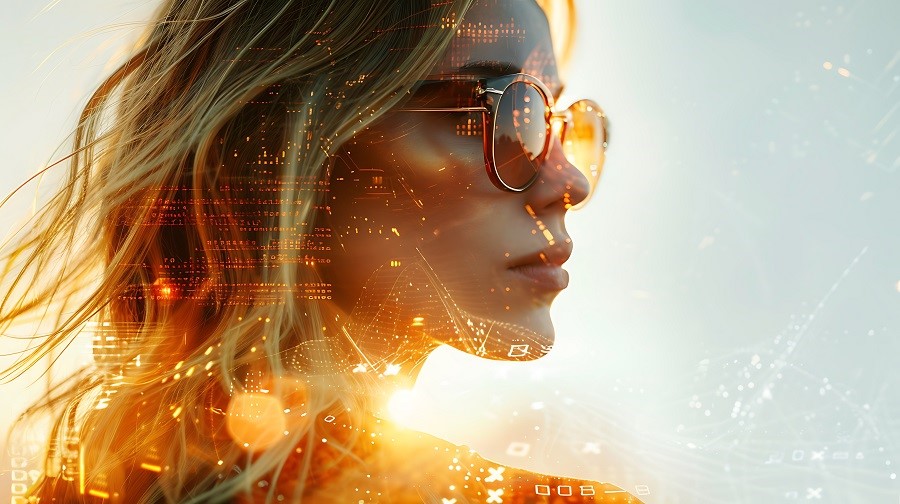From stock photos to AI personas: redefining visual identity with next-gen image generation

Visual storytelling has evolved dramatically in recent years. The classic stock photo, once the foundation of digital design, now faces competition from advanced AI technologies. Companies and creators increasingly seek solutions that combine authenticity, diversity, and customization—needs not always satisfied by traditional image libraries. The emergence of ai-generated people images and custom ai personas brings a fresh approach to modern branding and communication strategies.
Why traditional stock photos fall short in modern projects?
Stock photos have long provided industries with instantly accessible visuals. Scalable, affordable, and widely used, they quickly became staples for online content, advertising, and social media. However, frequent reuse leads to a lack of originality and variety. Competing brands often select identical or nearly identical images, which diminishes distinct identities and makes it difficult for projects to stand out.
The limitations also extend to representation. Traditional stock photo collections sometimes struggle to include realistic human faces that reflect true demographic diversity. When searching for specific persona profile images tailored to defined buyer groups or audiences, results often disappoint. This challenge has driven the shift toward more dynamic, customizable visual assets powered by artificial intelligence.
How AI is changing the way personas are created?
The rise of image generation tools marks a pivotal change for marketers, designers, and entrepreneurs. These platforms enable rapid creation of ai-generated portraits and avatars that do not exist elsewhere on the web. Teams can generate unique visuals based on demographics, professions, moods, or even particular artistic styles—a degree of adaptation rarely achieved by stock image platforms.
An example of an innovative tool in the space is Best Creator, which empowers users to generate accurate and unique persona imagery perfectly suited to their project requirements. With an ai face generator, project leaders no longer need to settle for almost-right images. Technology enables detailed control over age, skin tone, hairstyle, wardrobe, and background. This results in diverse personas with significant benefits: accurate representation, reduced repetition, and improved alignment with brand personality.
Avatar creation and customization
Custom ai personas empower brands to craft avatars specifically suited to their needs. Whether representing various job titles, lifestyles, or communities, these AI-driven images communicate messages with precision. Adaptive avatar creation simplifies A/B testing: teams can quickly swap visuals and determine what resonates most with target groups, all without resorting to costly photo shoots.
A wide range of business scenarios—from HR portals to e-commerce demos—now benefit from scalable persona image production. Tailoring each persona profile image creates more relatable materials for both internal and external audiences, enhancing trust and understanding.
Diversifying buyer personas for brand safety
Diversity plays a central role in effective communication and genuine brand safety. AI-generated people images help avoid stereotypes or misrepresentation. Brands present inclusive visuals that promote dignity and respect, essential for reaching broader markets and fostering customer loyalty.
Image generators incorporate subtle cues such as clothing choices, cultural references, or physical features. This attention boosts the credibility of marketing assets, forging authentic connections with varied buyers. Prioritizing inclusivity from the outset ensures outreach remains both ethical and effective.
Best practices for using ai-generated images responsibly
The power to create compelling persona profile images brings creative freedom, but also responsibility. Working with machine-generated images requires careful consideration of licensing and transparency to safeguard intellectual property rights. Before adopting ai-generated portraits for commercial or public-facing projects, organizations should follow a clear licensing checklist:
- Verify the terms and conditions of the tool or platform providing image generation.
- Confirm whether outputs are royalty-free or if restrictions apply to commercial use.
- Document when, where, and how each ai-generated portrait was obtained or created.
- Review brand guidelines regarding the use of non-human or synthetic imagery.
- Assess risks related to real-world likenesses; some regions restrict resemblance to actual individuals.
Following these steps helps prevent legal complications and maintains consistent brand safety across campaigns. Open communication about the use of synthetic images builds trust, particularly among audiences concerned with privacy and ethical sourcing.
Beyond legal aspects, creative teams must monitor emotional impact and relatability. Frequent feedback ensures chosen personas align with intended messages and reflect positive values.
Integrating AI personas into future workflows
Seamless adoption of AI-driven visuals is set to reshape entire content pipelines. Imagine briefing a designer and receiving custom ai personas perfectly matched to any scenario within minutes. This process reduces time-to-market and minimizes revisions, allowing greater focus on storytelling and core messaging.
On-demand personalized visuals eliminate the search fatigue common with generic stock libraries. As technology progresses, increased realism and nuance will make distinctions between real photos and generated images nearly unnoticeable. Brands engaging early gain strategic advantages in visual consistency and agility.
Choosing the right image generation tools
An expanding marketplace offers everything from quick ai face generator applications to enterprise-grade avatar creation suites. Selection depends on required image quality, depth of customization, workflow compatibility, and output licensing. Teams should prioritize solutions featuring built-in diversity controls and flexible export options for multi-platform campaigns.
Security considerations are also crucial. Most modern SaaS providers undergo regular audits to ensure data protection, especially when models are trained on proprietary datasets or sensitive attributes. Reviewing technical documentation before adoption helps minimize integration surprises down the line.
Collaborating across departments with custom images
AI persona creation benefits more than just marketing and design teams. Human resources utilize persona profile images in onboarding guides to make digital training more engaging. Product development teams use ai-generated people images for mockups and walkthroughs, accelerating feedback and iteration cycles.
Encouraging collaboration around shared visual resources streamlines branding efforts. Standardizing style and realism levels across campaigns ensures recognizable experiences for all stakeholders, supporting both internal cohesion and external consistency.
From static to adaptive: embracing the future of personalization
The transition from stock imagery to custom ai personas mirrors broader shifts in expectations among users and businesses. Audiences no longer accept static, generic faces—they seek identification and genuine connection. AI-generated portraits guarantee that visual elements remain engaging and relevant throughout every customer journey.
Early adoption of these innovations signals leadership and fosters memorable interactions that build lasting loyalty. As new tools continue to refine realism, adaptability, and usability, the future of visual communication promises to be more vibrant, responsive, and inclusive than ever before.


